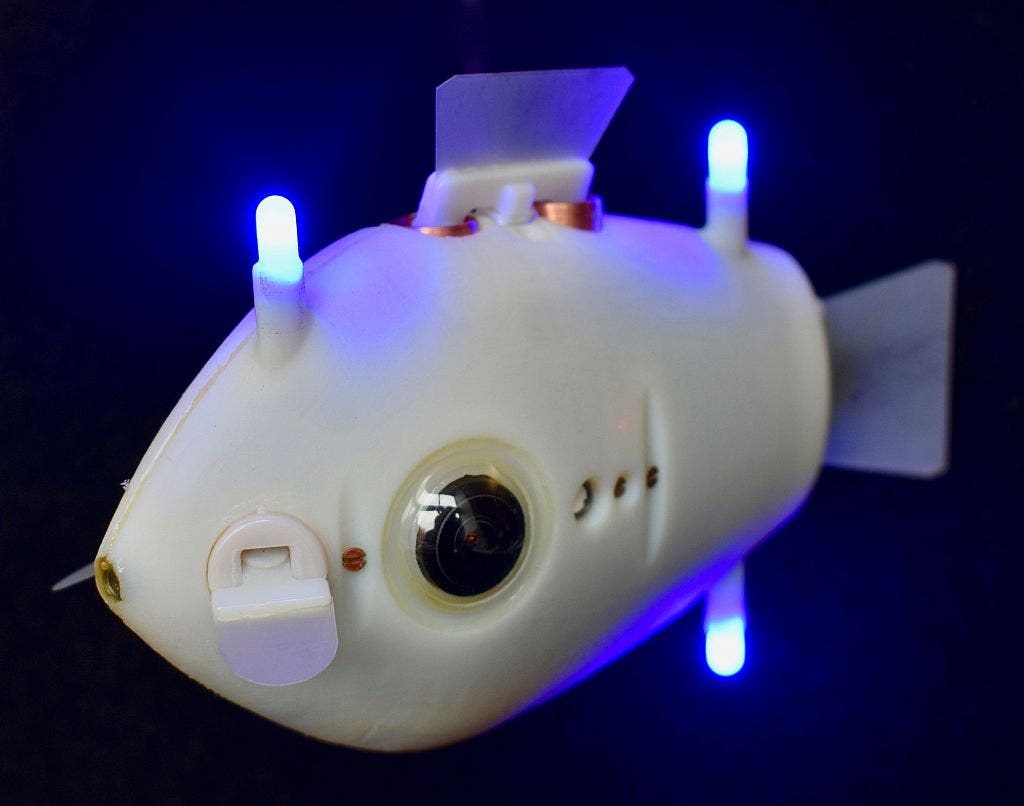Researchers have devised a swarm of small fish-inspired robots that can synchronize their movements by themselves, without any human input. The autonomous robots essentially mimic the behavior of a school of fish in nature, exhibiting a realistic, complex three-dimensional collective behavior.
Each robo-fish (called a ‘Bluebot’) is equipped with cameras and sensors that enable it to track its neighbors and get a sense of direction. This is a step beyond the typical multi-robot communication system, in which individual bots have to communicate with each other via radio and constantly transmit their GPS data.
The team of engineers at Harvard John A. Paulson School of Engineering and Applied Sciences (SEAS) and the Wyss Institute for Biologically Inspired Engineering even mimicked a fish’s locomotion, opting for flapping fins instead of propellers. The fins actually improve the submersibles’ efficiency and maneuverability compared to conventional underwater drones.
“It’s definitely useful for future applications, for example, a search mission in the open ocean where you want to find people in distress and rescue them quickly,” Florian Berlinger, the lead author of a paper about the research that appeared in Science Robotics on Wednesday, told AFP.
Berlinger added that other applications for these cute underwater bots include environmental monitoring or the inspection of infrastructure.

Each robot measures just 10 centimeters (4 inches) in length and the casing is 3D printed. Their design was partly inspired by the blue tang fish, native to the coral reefs of the Indo-Pacific (Dora from Finding Nemo is a blue tang fish).
During a test, a swarm of Bluebots was inserted in a water tank with a light source and no other external input from the researchers. When one of the bots was the first to detect the light, its movements signaled to the others to gather around. The robots could operate similarly in a search-and-rescue mission, the researchers said.
Berlinger hopes to alter the design in the future so that the robo-fish don’t require LEDs to track the direction of the swarm. This way they could be used outside the lab for conservation projects, such as for coral reefs. Ultimately, this remarkable fit of engineering may also one day reveal hidden insights about collective intelligence in nature.


